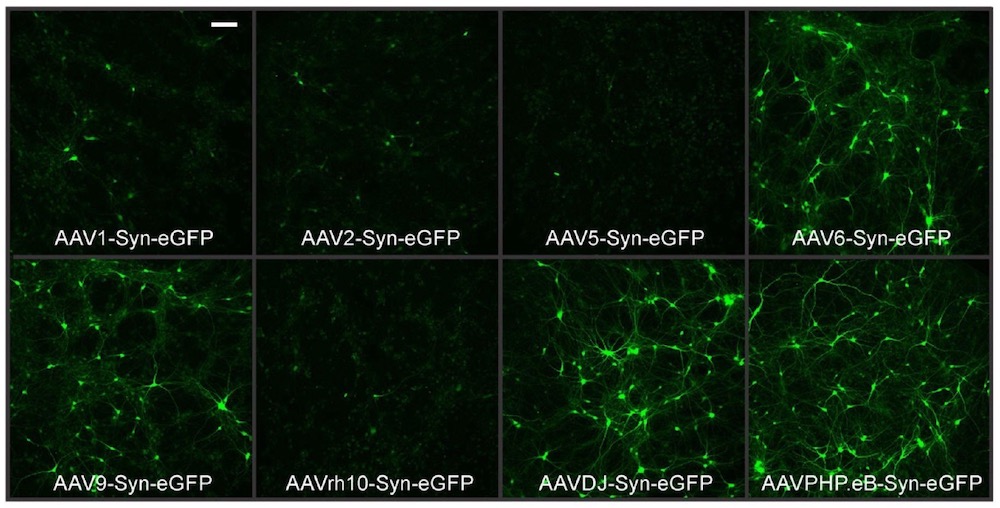Viral Innovation Core
Optimizing Viral Tropism
For most research studies involving viral vectors, it is desirable to restrict manipulations to a specific cell type. Cell specificity with viral manipulations is currently achieved with DNA regulatory elements such as cell-specific promoters or via transgenic animals expressing Cre or Flp recombinase in specific cell types. While cell-specific promoters are widely used, these promoters only coarsely segregate cell types. In addition, it can be difficult to balance cell specificity with strength of expression when the expressed transgene is toxic at high expression levels. Furthermore, intersectional approaches (e.g., pairing expression of Cre recombinase driven by one promoter with a “floxed” transgene whose expression is driven by another promoter) only work with tightly regulated promoters, as even leaky expression of recombinase can be sufficient for transgene recombination. While transgenic driver lines can facilitate neuron-specific viral manipulations, this approach is expensive, is largely restricted to mice, and is unlikely to be broadly available in more translationally relevant non-human primate (NHP) models. Accordingly, the VIC is also pursuing innovative solutions to the tropism-related limitations of current AAV vectors. New multi-modal AAV targeting paradigms will represent a substantial benefit to the broader scientific research community.
The VIC directs a research and development component with the goal of improving performance and utility of AAV vectors, oriented around the specific needs of the UMN addiction research community. The VIC is comprehensively and quantitatively mapping the engineerable potential of capsids of several AAV serotypes. This is helping us define capsid regions that are permissive to insertion of a protein domain that mediates programmable and covalent attachment of antibodies or other non-immunoglobulin scaffolds, which recognize surface receptors on addiction-relevant cell populations. ‘Arming’ capsids in this fashion thus redirects AAV tropism in a user-defined and predictable manner. Receptor-mediated gene delivery represents a powerful approach to achieving precise manipulation of neural circuits.

IBC Requirements
University of Minnesota investigators will require Institutional Biosafety Committee (IBC) approval to work with reagents produced by the VIC. It is important to submit an IBC protocol, or an IBC protocol amendment, as soon as possible once committing to seeking VIC support for your efforts. To facilitate this process, we have prepared documents that will help you secure IBC permission for work with recombinant DNA and/or viral vectors:
- Projects involving AAV vectors
- Projects involving lentiviral vectors (2nd generation)
- Projects involving lentiviral vectors (3rd generation)
These help aids can be found on the Viral Vector and Cloning Core webpage.
The IBC protocol for the VIC is 1804-35834H (latest approval date: 05/29/2018)